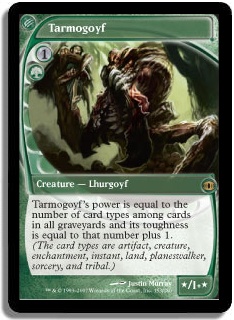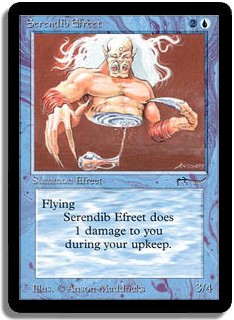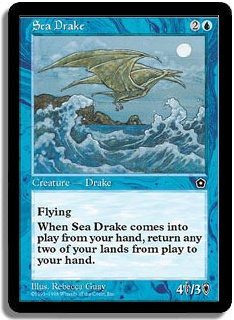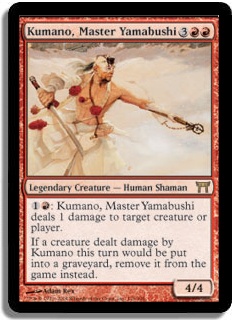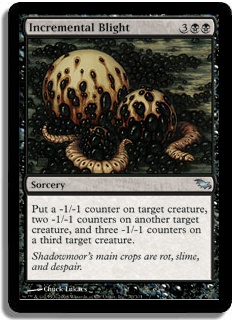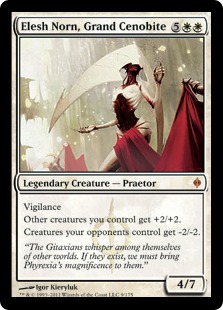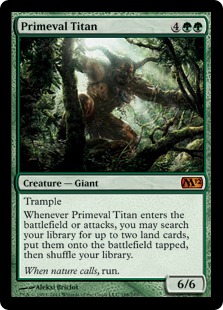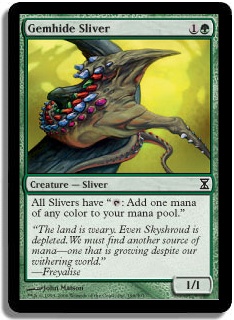In Magic, people don’t solely rely on their own card evaluation skills to evaluate the power of cards; they look to a card’s performance in other formats to use as data for whether a card can be used in Cube. When it comes to newly released cards, people don’t have the ability to look to other formats for knowledge as they’re new cards, although that does happen to an extent with Prereleases. Think about cards like Mimic Vat, which people initially thought was solid for Cube until they played with/against it at the Scars of Mirrodin Prerelease and saw just how powerful the card could be in a Cube.
However, with older cards, people have their own personal experiences as well as years of people playing with the cards, especially with cards dating back to the origins of the game. Using that knowledge can be useful for Cube card evaluation. Essentially, this is outsourcing knowledge to other sources and outsourcing card evaluation. In this article, I’ll discuss how outsourcing is used and how to utilize it well in Cube—from both the draft and design perspective.
We typically think of outsourcing as a cost-saving measure for companies to save on labor costs, but that’s not the only reason that companies outsource. Sometimes companies outsource research and development to other companies that have years of experience in the products that they’re looking to develop; it’s a more efficient use of resources to have another company that has more experience in researching do it than to do those tasks in-house. The main company also probably doesn’t have the time to perform the research themselves.
Let’s be honest, a majority of the people that Cube don’t primarily spend their time playing Magic, and many people aren’t nutcases like myself who devote 99% of their Magic time researching and playing Cube. Aside from grinding Magic Online Cube events, there isn’t a quantitative benefit to improving one’s Cube like there is with using Magic time on formats like Limited and Constructed—no one’s going to get a cash payout by being the master of Cube.
By outsourcing card knowledge to other formats, they’re able to use others’ time to their advantage. It’s the same way that people effectively outsource card testing to Magic Online events and other tournaments: iterative grinding by tons of people will, at least in theory, find the most efficient way of doing something. Should I include two, three, or four copies of this utility land in my deck? Playtesting can help to find the answer to this question, but many outsource this to the multitude of Magic Online players and paper Magic players all over the world.
People in Magic don’t outsource to others in Magic as companies do; they instead outsource knowledge to other sources like finding out from professionals’ card evaluation articles and effectively outsourcing card testing to other formats by looking at a card’s success in other formats to see whether the card can pass muster in their Cube. This can help to de-theorize card evaluation and make the evaluations less abstract for people.
Think about how many people were initially underwhelmed by Dungeon Geists and Lingering Souls but gave those cards more of a chance after Pro Tour Dark Ascension and the success of Jon Finkel Esper Sprits deck. Peoples’ theoretical evaluations didn’t necessarily change; Dungeon Geists still was a four-mana 3/3 that kept a creature locked down and Lingering Souls still made a ton of fliers for cheap. What did change, however, was that the cards performed the tasks much better than they were expected to, and people found this out using data from Finkel’s feature match as well as from people playing it around the world afterwards.
Other cards, usually those that we don’t have much to compare them to, generally end up going under everyone’s radar, and their evaluation was outsourced as well. Tarmogoyf was, for ages, considered to be a bulk rare whose sole purpose was to hint at planeswalkers, until other people figured out that it was a good card (although I wasn’t Cubing then, I can say with almost complete certainty that people who had Cubes dismissed Tarmogoyf as a terrible card) Even a card like Delver of Secrets went under the radar for nearly everyone until people realized that it was a "blue Wild Nacatl" that would see play across many formats. People who have decided to put it in their Cubes have done so mainly due to the card’s nearly universal adoption in Constructed formats.
The idea that correlation doesn’t imply causation is a mainstay of social science and statistics; it’s the idea that just because two variables are related, that doesn’t mean that an increase/decrease in one factor causes the other to increase/decrease.
For outsourcing evaluation of cards to Cube, this idea is frequently used as a point to show that just because a card is good in a format like Limited or Constructed, that doesn’t necessarily mean it’s a shoe-in for Cube. Â
But is this true? It is to an extent, but understanding this is key to effectively utilizing outsourcing for cards in Cube.
About a year ago, I wrote an article about how certain cards like Life from the Loam and Smokestack can require support in Cube and how to evaluate them in Cube. I talked about how people, myself included, initially dismissed those cards under a worst-case scenario mentality. Initially people like me dismissed Abyssal Persecutor because we thought that the card wouldn’t have the required support—but we found out that those cards actually did have support.
Powerful cards tend to get played often, and going to sites like deckcheck.de or checking the SCG deck database can help to identify what powerful cards are being played and how often. If you were to look at every card in my Cube, almost all of them have been played in some Constructed format in some form.
However, this doesn’t really give any kind of context as for why the cards are being played; all it really says is that it is. Sometimes it’s just based on pure power level—cards like Lightning Bolt, Tarmogoyf, and Swords to Plowshares are played often because they’re the best at what they do. But sometimes cards are the victims of their environments, and the main key to utilizing outsourcing of card evaluation to other formats is understanding the environments themselves.
Think of Thornling when it was in Standard with Path to Exile and Abyssal Persecutor during the Caw-Blade days. Both finishers were hardly played mostly because the removal du jour of those formats made those cards a poor choice for the format as those removal effects defined what could be played in the formats. The term "the Jace test," requiring creatures to either have an immediate effect when they entered the battlefield or to be cheap, was used because of Jace’s format-defining power. If someone was to merely look at deckcheck.de and look up Thornling, they would see that it didn’t get played that often. Without understanding the format that it was in, if the person was to just outsource card evaluation to its Constructed performance the person would incorrectly dismiss Thornling as a bad card.
A format where cards like Path to Exile are at such a high density can make cards like Thornling unplayable, but that same environment doesn’t exist in Cube; while there are some removal effects that exile/bounce opposing creatures, they’re nowhere near at the same density as they were in Conflux-era standard. Thornling is able to protect itself very well and deal damage in an effective manner when compared to other Cube-worthy five-drops like Indrik Stomphowler, Genesis, Deranged Hermit, and Vorapede. The main key is understanding why the card is good—merely being able to point out that a card was played to success in a format doesn’t say why a card is good. All it says was that the card was good in a format. There’s a very good sign that it would be good for Cube, but it isn’t a guarantee.
Think about Serendib Efreet—despite it being banned in the same era as the almighty Juggernaut, it hasn’t made much of an impact in modern-day Magic aside from being played in Legacy Faerie Stompy alongside Sea Drake. But does that make Serendib Efreet a bad creature? Of course not—it’s one of the most efficient evasive damage dealers in the game; it just doesn’t really have a home in Legacy or Vintage!
Is Sea Drake a good Cube creature because it was played in Faerie Stompy? Of course not! The conditions that made it good in Faerie Stompy don’t exist in Cube! (Even in Cubes that power, the density of cheap mana rocks and lands that produce two lands don’t exist at the density required to make Sea Drake’s drawback feasible in Cube.)
One time, I looked at a pack of Cube cards with nothing notable aside from Noble Hierarch and Bone Shredder and asked someone what the pick from the pack was. "Bone Shredder is one of the best Limited removal spells of all time; Noble Hierarch is a mana dork." Aside from being an over simplistic card evaluation that tends to plague the Magic community, the talking point that Bone Shredder is a really good Limited removal spell isn’t really relevant either because the overall power level of Noble Hierarch is much better. Although Bone Shredder is a perfectly fine Cube card, I’ve heard that type of reasoning used for whether a card is a good Cube card: "Kumano, Master Yamabushi is insane in Draft, why wouldn’t that be good enough for Cube? Isn’t Cube a Limited format?"Â
While the Cube format is a Limited one, the environment itself is much different. As most Limited formats are on the midrange to slow side (aside from exceptions like M12, Zendikar, and DII) and based on creature combat, removal is at a premium—to the point where we’re happy to take removal spells like Weed Strangle and ones like Harvest Pyre highly. Obviously that tenet doesn’t apply to Cube. Spells like Incremental Blight take advantage of the fact that creatures are almost omni-present in Limited formats, yet they’d be terrible in Cube because those same assumptions can’t be made.
Also, many Draft bombs tend to either be cards that can take advantage of the relatively slow environment by grinding out an advantage (like Ant Queen) and big evasive threats (even relatively weak ones like Cerulean Sphinx) that are frequently high picks. In Cube, this isn’t necessarily the case as there are much better six-mana evasive creatures like Keiga, the Tide Star and Consecrated Sphinx. Even the vanilla Blaze was a high pick in Limited because it was removal and an "evasive finisher," but those X-spells aren’t as good as they are in Cube (they’re closer to their performance in a format like Standard) where their relative lack of efficiency comes to the forefront. Only the best ones make it (like Devil’s Play/Rolling Earthquake, etc.)
In other words, understanding the environment through understanding the conditions and assumptions in the format is key, and something you must take into account when using data from other formats for Cube. If someone was to assume that a card like Incremental Blight would be good in Cube because it was an insane bomb (that frequently emulated Plague Wind) in Shadowmoor Limited, it’d be an incorrect evaluation because it ignores that for Incremental Blight to be playable there must be three creatures in play, and that might not happen consistently enough in Cube.
Granted, outsourcing has been utilized in other non-Cube ways as well. Cards like Olivia Voldaren were initially thought as cards that you’d never want to face in Draft, but people like Patrick Chapin utilized the knowledge gained from analyzing the card in Limited and used it in Standard Grixis Control. See this excerpt from his "My Dearest Olivia" article:Â
"It still makes me smile the sheer number of people who read Olivia when you play her against them in Constructed. These are people who know darn well how she works as the best card in the Draft format, but the very notion of Olivia in a 60-card deck is so far out of the realm of possibility that they are compelled to reread her and figure out what they missed.
Why is she so good? Well, as detailed in Part 1 of my Innistrad Set Review as well as Part 3 and this article before States, she completely takes over the game by herself. She shoots down the plethora of one-toughness creatures in the format (if Gut Shot is good, why wouldn’t activating Olivia’s ability be also?) but also threatens to steal the big ones. She grows quite quickly, ensuring opponents have less time to try to draw an answer (and with Doom Blade not hitting her as well as her growing out of control quickly, this is actually not as easy a proposition as some would assume)."
When outsourcing card evaluation to other formats, another key step is being able to utilize this knowledge to help you to change your opinion on cards that you may have dismissed. This gives you more concrete data to theoretical card evaluation, especially when it challenges preconceptions that you had about those cards before. However, when doing this, it’s important to understand the differences between Cube and the native formats. It’s easy to fall victim to being too myopic when outsourcing, thinking in a linear fashion, and losing focus on what makes a card good and how that could be good in Cube. For example, think of Elesh Norn, Grand Cenobite and Primeval Titan.
A mistake that people made, myself included, was that we incorrectly applied the knowledge from other formats to Cube and thought in too linear a fashion. "The best lands in Cube are ones like Library of Alexandria and mana fixers. Why would I want to get LoA or some dual lands/fetches on turn 6? Shouldn’t they just be dead after ramping?"
The problem with that logic was in my linear thought—when thinking of the best lands to get with Primeval Titan—my mind went to Library of Alexandria and the various fixers and was disappointed because getting those cards with Primeval Titan is just awful. Other lands that Primeval Titan typically gets—the Inkmoth Nexus and Kessig Wolf Run combo—aren’t good in Cube (although the Wolf Run by itself is), as is Valakut. So why did I become a fan of it? Because I eventually realized that it had other uses that I hadn’t thought of due to initial disappointment. Getting lands like manlands (ones from Mishra’s Factory up until the Worldwake manlands) and others like Maze of Ith, Ancient Tomb, and bouncelands for value is awesome.
The same thing happened with Elesh Norn; even when it was performing excellently in Scars Limited, I dismissed it thinking, "Who wants to kill a bunch of X/2s on turn 7 anyway—there shouldn’t be any at that time, and they can just kill it after when you may not even get value of it. And why would my control deck have other creatures?" Although this argument didn’t really address its use in Limited, it showed how a myopic view was bad. In the time since playing Elesh Norn in my cube, I’ve found that it has almost always killed at least a relevant creature if not several, even in the rare cases where it died to removal. More often, it was an oppressive force on opposing creatures which suddenly couldn’t fight profitably, much like she did in Limited and Constructed—and the +2/+2 bonus was occasionally relevant as well. Kenny Mayer said that it was his bid for the second best finisher behind Wurmcoil Engine, and I can honestly see why. Had I dismissed Elesh Norn as just a Limited bomb, I’d have missed out.
However, you don’t want to go too far down that rabbit hole either, as it can be easy to convince yourself on a card based on its merits in a format if some of those conditions exist in Cube. Consider Stifle: while there are still cards like fetchlands in Cube, like in Legacy and Vintage, the density isn’t high enough to make it worthwhile in Cube and there are uses like countering triggers on permanents with enter the battlefield triggers or planeswalkers, the overall environment right now isn’t conducive for Stifle. (In a year or so, those conditions may change to the point where the critical mass of targets for Stifle in Cube does happen!)
It can be easy to fall for the talking points in both extremes for why a card isn’t good enough for Cube because Cube is a different format, or that it’s good enough for Cube because Cube shares characteristics with other formats. Although it sounds like a broken record, being able to find a correct balance is key—being able to utilize outsourcing for card evaluation is a very useful tool, but it’s not the sole source either.
Something else can arise when outsourcing is when the drafters themselves outsource card knowledge to other formats when drafting.
When hosting a draft with my common Cube one time, we had someone who had never Cubed in the draft. We did the draft, and after the draft ended, he said that he drafted Gemhide Sliver early in the deck and was disappointed that there were no other Slivers in my cube. Now I could’ve just thought, "Well, of course there aren’t any other Slivers in my cube; Gemhide’s the closest thing to a Birds of Paradise/Utopia Tree in the format and the rest of the Slivers/Changelings are terrible," and dismissed his complaint as just that.
But I thought about it more, and I was really disappointed because he very much expected a Sliver deck to come about and it just didn’t happen, which resulted in him being disappointed even though there wasn’t anything that I could really do without making my cube worse. In theory, every card in a Cube has an implicit statement saying, "This belongs in a deck, there’s a good deck for this card, the deck is supported, and this has a home. Don’t worry!" However, those good intentions can just go awry. In this vein, the Cube designer is making the drafters put a good amount of trust in the implied "there’s support for this card," even if those words are never actually uttered.
Zac Hill recently addressed this in set design in this article about why more complexity doesn’t necessarily make for a better-designed card:Â
"It’s that we, as human beings, trust designers to create things that are purposive. When they aren’t, it feels bad for us—like the hand that promised to guide us is just as lost as we are."
When drafting, it can be hard to see whether the cards in the draft are purposive and if we can put trust in the designers’ visions. It’s much easier if you know the Cube designer and the designer’s ideology behind Cubing or at least have some familiarity with the list. If I see Natural Order in a Cube pack when drafting, I don’t necessarily assume that I’m going to see Progenitus later in the packs, but it isn’t unreasonable for me to expect to be able to draft a decent toolbox with an upper-end finisher like Woodfall Primus or Terastodon along with some other creatures like Indrik Stomphowler or Thrun, the Last Troll. If I draft a Cube with regularity, I’m able to know if a card like Natural Order or even if one like Jackal Pup/Goblin Guide has a home and is supported, not necessarily to the extent that a card like Natural Order is in Legacy with NO Bant or NO RUG, but in a way that’ll help me to do well in the draft.
It’s easy to say, "Cube is different from other formats," and it’s true, Cube isn’t Limited and it isn’t quite Constructed, either. It’s its own format, but it isn’t so much so that data can’t be drawn from other formats. Like many things, especially in Cube, neither extreme (a card’s performance in non-Cube has no bearing on its performance in Cube or a card’s performance in non-Cube has a 100% bearing on its performance in Cube) is correct. The truth lies somewhere in the middle.
May all of your opening packs contain Sol Rings!
@UsmanTheRad on Twitter
My blog featuring my cube lists: http://idratherbecubing.wordpress.com
Cube podcast that I and Anthony Avitollo co-host: The Third Power
P.S. — Check out this 12-minute video by Justin Parnell and Ali Aintrazi talking about their Custom Cube project!
P.P.S. — Be sure to check out the Split Card Cube by Stuart Fleisher, whom Anthony and I interviewed for our podcast!

